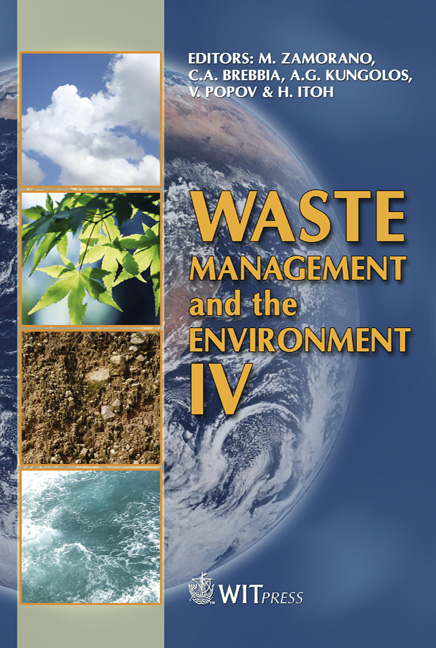Chromium And Phosphorous Recovery From Polluted Water By Hydrothermal Mineralization
Price
Free (open access)
Transaction
Volume
109
Pages
8
Page Range
781 - 788
Published
2008
Size
431 kb
Paper DOI
10.2495/WM080791
Copyright
WIT Press
Author(s)
T. Itakura, H. Imaizumi, R. Sasai & H. Itoh
Abstract
Detoxification of polluted water containing chromium and phosphorous and its resource recovery were investigated by hydrothermal mineralization using Ca(OH)2 or CaCl2 mineralizers. Under the optimum treatment condition for removing chromic acid (at 473 K, for 2 h using CaCl2 mineralizer in an in situ sampling-type autoclave), CrVIO4 2- was recovered as CaCrO4 and the concentration in the treated-water was 0.3 mg/L, which was lower than that of the standard of discharged water in Japan. The phosphorous concentration in the treated-water, which was obtained by the hydrothermal treatment at the optimum treatment condition (at 473 K, for 12 h with Ca(OH)2 mineralizer by using the same sampling-type autoclave), was 0.2 mg/L regardless of the ionic states. Phosphorous compounds (PIIIO3 3-, PIO2 3-) were recovered as Ca(HPIIIO3)(H2O) precipitate. This result indicates that mono-valent phosphinic acid (PIO2 3-) was oxidized and simultaneously precipitated by the treatment. Therefore, detoxification of the polluted water and resource recovery was accomplished by the hydrothermal mineralization treatment. Keywords: detoxification, resource recovery, hydrothermal mineralization, chromium, phosphorous. 1 Introduction Chromium and phosphorous are widely used as electroplating or metal finishing reagents in modern industries as well as fertilizers, and a large amount of wastewater containing these elements is discharged. The hexa-valent Cr in such
Keywords
detoxification, resource recovery, hydrothermal mineralization, chromium, phosphorous.





